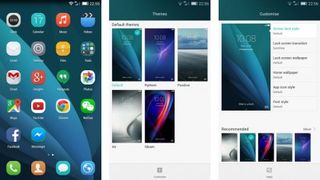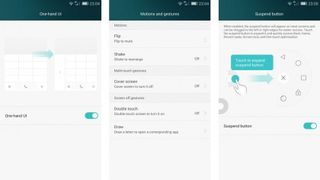Why you can trust TechRadar
Honor are marketing the 4X as a high-spec smartphone with an affordable price tag, highlighting compelling hardware and software features.
Power is arguably one of the biggest draws of the Honor 4X, with the Chinese manufacturer claiming it to be the most powerful budget smartphone currently available thanks to the inclusion of a Kirin 620 octa-core processor and 2GB RAM.
Honor also emphasises the longevity of the 4X's 3000mAh battery, along with the optical performance of both the 13MP primary snapper and 5MP front-facing shooter. Sit tight, as all of these features are covered in depth later on in the performance, battery life and camera sections of the review.
Outside of Asia and other developing markets, the inclusion of dual-SIM functionality in affordable smartphones seems to be slowly on the rise. Like the recently released Acer Liquid Jade S and ZTE Blade S6, the Honor 4X looks to appeal to a niche group of users who normally have to carry around separate work and personal phones.
Frequent international travellers and business people in particular will appreciate the ability to use two microSIM cards in the Honor 4X, reducing the need to hot-swap between a local and foreign SIM card every few days.

In addition, both microSIM cards in the Honor 4X can access 4G LTE frequencies which is rare for a smartphone outside of China. Most competing dual-SIM devices in the same price bracket only offer 4G LTE connectivity on a single SIM, such as the Moto G (2014), making the 4X a must-have for high-speed data fanatics.
Huawei's custom Emotion UI (EMUI) 3.0 is present on the Honor 4X and runs on top of Android 4.4.2 KitKat. While not the latest version of Google's OS, KitKat is a stable option until the major bugs in Lollipop are squashed. Honor has promised regular software updates for the 4X, and users should expect to see Android 5.0 on their devices in the next couple of months.
Many of the big name Android smartphone manufacturers, such as Samsung and LG, have been refining their custom user interfaces to adhere more to Google's material design guidelines. Yet the majority of Chinese firms are sticking to their principles, continuing to opt for a heavily tweaked experience that aesthetically tends to resemble iOS rather than Android.
Like Xiaomi's MIUI and Meizu's Flyme OS, Emotion UI on Huawei and Honor devices aims to offer a simpler, more customisable experience than (near) stock Android. In practice it does add some useful features, but arguably at the expense of a visually appealing design. Android purists will be having nightmares about the garish, cartoon-like icons and overall lack of theme cohesiveness throughout Emotion UI 3.0 on the Honor 4X.

While having apps spread across multiple homescreens maybe less confusing for some users, I personally found it too cluttered. In order to make enough room for widgets, without having a multitude of homescreens, you'll have to resort to cramming apps into folders.
Thankfully there's very little bloatware on the Honor 4X, so you'll never need an iOS-style unused apps folder. That being said, the pre-loaded Mirror and Magnifier apps will not be particularly useful to most and just seem to be rather gimmicky extensions of the camera software.
Google apps are welcome additions however, with all the basics such as Play Store, Gmail, Maps and Chrome running smoothly. The only issue I found was that the icons for these and other third-party apps were inconsistent and looked out of place when compared to the stock EMUI apps.
This minor gripe can be overcome on the Honor 6 with the theme app, which allows you to download online themes. On my Honor 4X review unit the theme app only displayed five default themes, without giving me access to more online content. The Indian retail version of the 4X can access online themes, so expect to see that feature available now (or in the near future) on other countries' variants.

Motion control and smart assistance settings are very handy additions to Emotion UI, especially considering the Honor 4X's large footprint. Screen-off gestures such as double touch to wake and the ability to draw certain letters on the screen to launch corresponding apps are functional, if not game changing.
Reaching across a phablet screen one-handed can often be a challenge for those with smaller hands, so Emotion UI has introduced a few features to make using the Honor 4X a little less of a chore. One-hand UI acts much like the one-handed Input mode on the Samsung Galaxy Note 4, moving the dialler pad and keyboard to your preferred side of the screen.
A feature called suspend button can also be enabled, allowing the user to access the back, home, recent tasks, screen lock and optimisation soft keys from either edge of the Honor 4X's screen. It doesn't sound like a big deal, but during everyday use I found this feature pretty helpful, meaning that I didn't have to reach down to reach the capacitive buttons.
Like the Huawei Ascend Mate 7, Honor 6 and Liquid Jade S, the Honor 4X includes DTS enhanced audio. You have to enable the feature within the sound settings menu, and while it does improve sound quality through headphones, output through the speaker is still mediocre.
Current page: Key features and interface
Prev Page Introduction and design Next Page Performance and battery life
